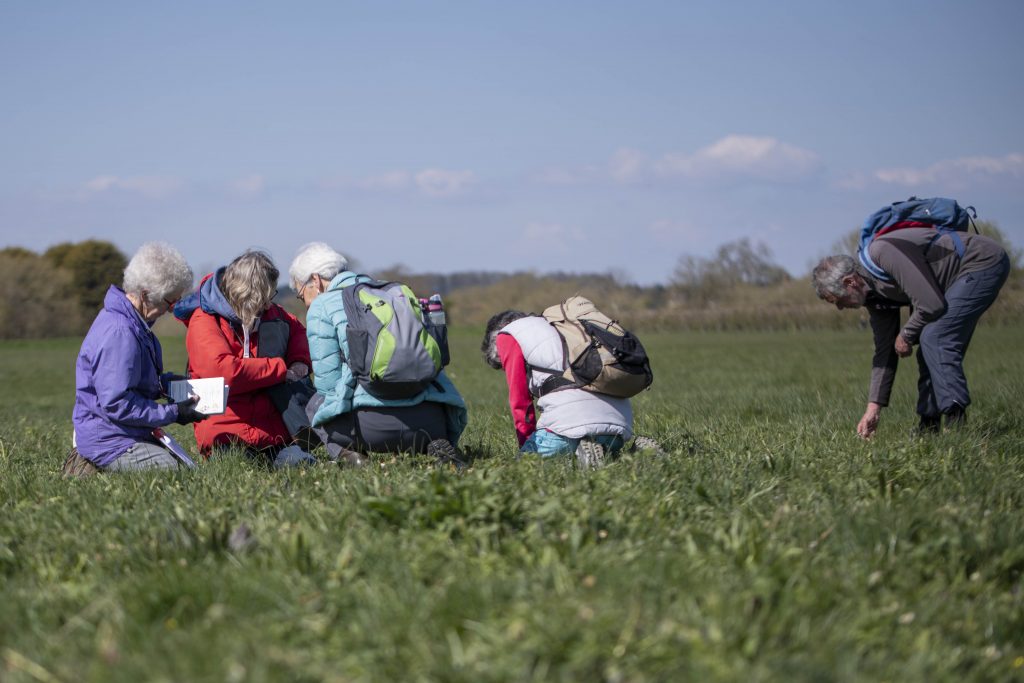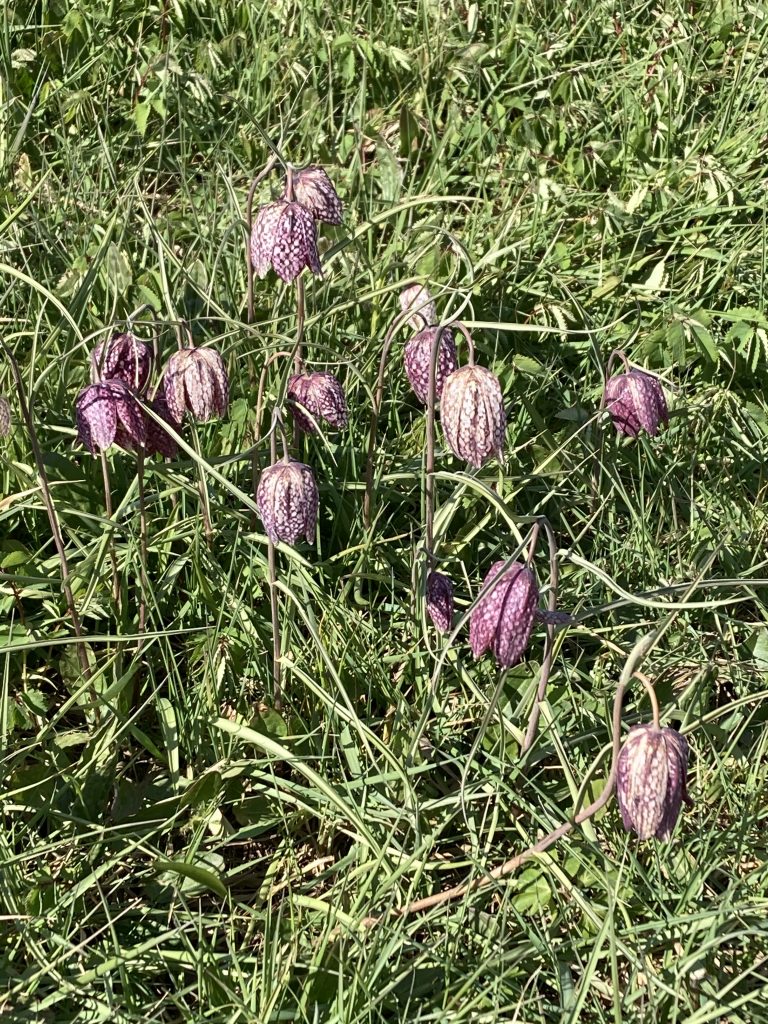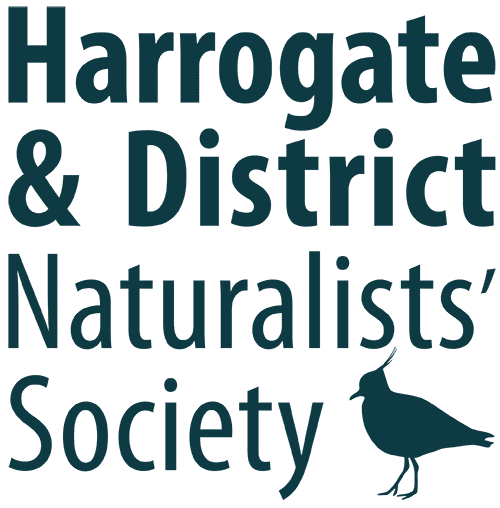Aubert Ings is a traditionally managed unimproved hay meadow with flora typical of neutral grassland. The underlying rock is southern magnesian limestone, with overlying alluvial deposits from the adjacent River Nidd. The meadow is surrounded by earth banks to reduce flooding.

Covid restrictions were in force so numbers were limited and the trip split into a morning and afternoon session to accommodate everyone who wished to attend. There were 6 in the morning and 6 in the afternoon. Each session was self-led with no-one specifically leading. This was actually very good for developing our identification skills, and as it was early in the year many plants were not yet in flower we had to closely examine the leaves instead.
Despite being a hay meadow, there were species typical of woodland such as Dog’s Mercury (Mercurialis perennis). Bluebell (Hyacynthoides non-scripta), and Wood Anemone (Anemone nemorosa) were growing in large drifts. The anemones in particular were badly frosted because of current weather extremes between chilly nights and bright sunny days. More typical species included Cowslip (Primula veris), Great Burnet (Sanguisorba minor ssp minor) and Field Garlic (Allium oleraceum). However the most unusual species found were Wild Tulip (Tulipa sylvestris) and Snakeshead Fritillary (Fritillaria meleagris). The deep yellow tulips were generally high on the earth banks and naturalised amongst the grass. Apparently the numbers were particularly spectacular this year. The fritillaries, in the meadow itself, were both the checkered purple and also the plain white variant.

Many thanks to Kerry for organising
Hazel Mitford
